So, after 2.5 years in Andrea Centrone’s lab at NIST Gaithersburg I am back in Vienna. My work here starts with a bit of retrospective and a goodbye to an old friend.
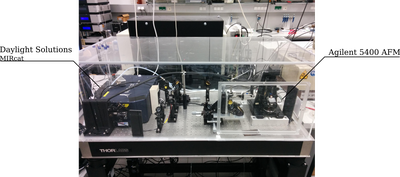
I started working on nanoscale IR in Bernhard Lendl’s group in late 2013. At that point, Bernhard’s group had been working with quantum cascade lasers for a few years already and we were interested in using them together with PTIR as Mikhail Belkin had first demonstrated a bit earlier. Keysight labs Austria were kind enough to lend us a Keysight 5400 AFM, we added some optics and an EC-QCL and were able to take PTIR spectra and images pretty soon after. The image above is a later state of that setup, after we had acquired a new Daylight solutions MIRcat EC-QCL to get a broader wavelength coverage.
After I left the Lendl group in 2016, Florian Reisenbauer and Anna Balbekova continued to work on the instrument. However, once they had finished their theses the project petered out. Now I am back and ready get PTIR moving again in Vienna. However, at this point the old setup is kinda outdated and is just collecting dust. It’s time to upgrade.
The self built system had two main challenges:
it had a huge air volume that was exposed to ambient air whenever access to any of the movable mirrors or the AFM were necessary. It took forever to remove the water vapour lines from the spectra again
All beam steering mirrors were manual only. Hence, compensation of beam pointing instability was quite cumbersome.
Anna got rid of the large volume by subdividing the instrument enclosure (the big aquarium) into an optical compartment and a sample compartment. The second challenge however was never really addressed. It could have been achieved by replacing the manual actuators on the stage with motorized ones. Below is a photo of the final version of the setup this morning.
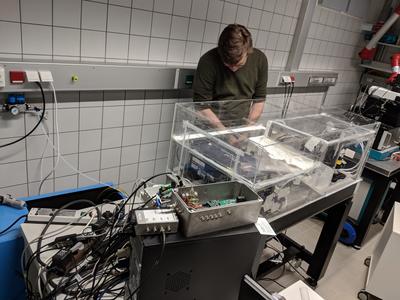
And here is a top view of the optical and sample compartment. You can see the MIRcat on the left. An ITO window was used as a beam combiner to align a read laser pointer with the IR laser beam.
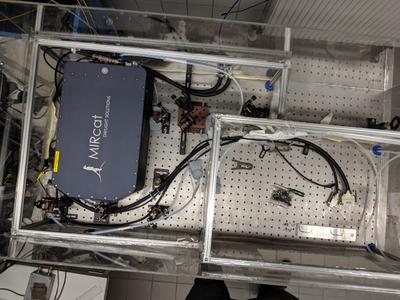
This is me holding our work horse AFM, the Keysight 5400. A decent AFM, not really all that optically accessible. One of the biggest advantages of this AFM was, that it was very flexible with an API that allowed to perform a lot of tasks programmatically and easy access to all datachannels of the instrument.
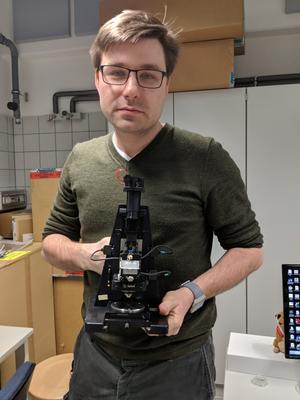
And finally, this evening, the optical table was empty again, for the first time in four years. And all the components were neatly stowed away in a cupboard.
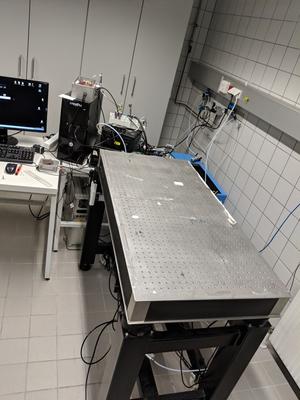
Our optical table is finally completely empty.
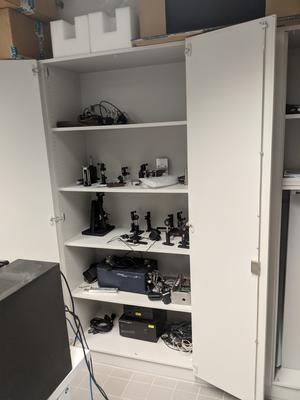
And all components are stowed away. PTIR setup, some assembly needed.
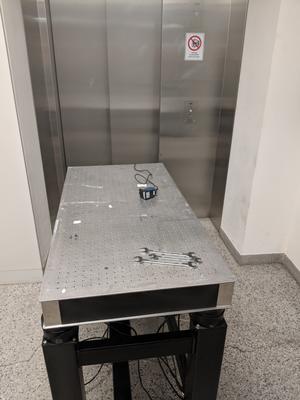
So this is it. We now have a lot of empty space in the nearfield lab. But not for long.